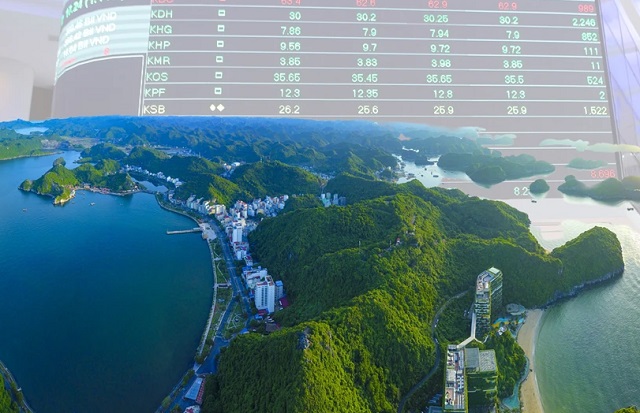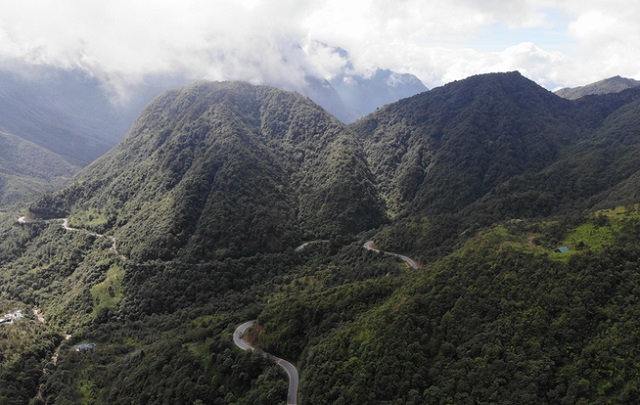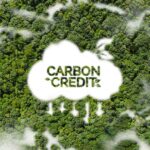
Vietnam is preparing for the upcoming pilot operation of its carbon market. (Photo: VNA)
|
According to the roadmap, before June 2025, Vietnam is set to finalize the legal framework for greenhouse gas emissions trading and carbon credits – paving the way for the pilot launch of a carbon exchange from June this year to 2028, before the official operation of the carbon market in 2029.
However, in a recent interview with VietnamPlus reporters on May 29, a representative from the specialized agency under the Ministry of Agriculture and Environment revealed that this plan might not be realized within the expected timeline due to the complexity and novelty of the task at hand. The Ministry of Finance is currently drafting a decree on the domestic carbon exchange, which is awaiting appraisal before being submitted to the government.
Establishing Carbon Credit Standards
According to the Ministry of Agriculture and Environment, Vietnam has already enacted a legal framework to develop a domestic carbon market. The Law on Environmental Protection of 2020, specifically Article 139, provides the foundation for the “Organization and Development of the Carbon Market,” upon which subsequent policies will be built.
Additionally, the government has issued Decree No. 06/2022/ND-CP, which regulates greenhouse gas emissions reduction and ozone layer protection. This decree is expected to be amended and supplemented soon.
As per the proposed timeline, Vietnam will implement the carbon market in three phases. The first phase (before June 2025) will involve the establishment of the legal framework and technical infrastructure by specialized agencies. The pilot phase, from June 2025 to the end of 2028, will witness the establishment of the carbon exchange. Finally, from 2029 onwards, the carbon market will be officially operational nationwide.
The “Project for the Establishment and Development of the Carbon Market in Vietnam,” approved by the Prime Minister on January 24, 2025, further outlines key tasks for the upcoming period, demonstrating the government’s determination to meet the set timeline.
To ensure the effective implementation of the carbon market, the United Nations Office for Project Services (UNOPS), through the ETP program, has provided technical support and funding for the “Assessment of the Impact of the Greenhouse Gas Emissions Trading System and Carbon Credits in Vietnam.”
During the pilot phase of the exchange, carbon credits are expected to be the dominant commodity traded on the state-managed platform. However, to efficiently operate this market, one of the critical aspects is standardizing the supply and clearly defining the eligible “commodities” for circulation.
Currently, Vietnam recognizes three types of carbon credits for trading: credits obtained from programs and projects adhering to Vietnamese standards; credits under Article 6 of the Paris Agreement, coordinated by the United Nations, which is a vital tool for countries to fulfill their emission reduction commitments through international cooperation; and credits from international cooperation mechanisms in which Vietnam is a member, such as the Clean Development Mechanism (CDM) and the Vietnam-Japan Credit Mechanism (JCM).
The Ministry of Agriculture and Environment is also collaborating with relevant ministries and sectors to establish Vietnam’s carbon credit standards, applicable to programs and projects generating credits for the domestic carbon market. This provides a basis for carbon reduction programs and projects to register, undergo appraisal, and receive credits following national standards.
It is anticipated that ministries and sectors will approve projects and issue carbon credits within their respective domains. During the official market operation phase, starting in 2029, considerations will be made to include an additional type of reputable carbon credit (besides the three aforementioned types of carbon credits).
According to statistics from the Ministry of Agriculture and Environment, as of March 2025, Vietnam had registered 274 projects under the Clean Development Mechanism, 45 projects under the Carbon Standards that have been verified, 58 projects under the Gold Standard, and several projects under other standards.
Moreover, the Ministry of Industry and Trade and the Ministry of Agriculture and Environment have signed agreements with the World Bank to sell emission reduction certificates from energy-saving programs and REDD+.
Ensuring Supply for the Market
According to experts, the exchange of carbon credits aims to incentivize businesses to reduce greenhouse gas emissions and generate additional revenue from credit sales. It also aims to meet the needs of businesses with high emissions to offset their emission quotas. However, many have cautioned that overreliance on carbon credits to offset quotas could hinder the nation’s and businesses’ emission reduction goals.
Ms. Nghiem Phuong Thuy, a specialist from the Department of Forestry and Forestry Inspection (Ministry of Agriculture and Environment), shared that it took the forestry sector ten years (2005-2015) to implement emission reduction measures and several more years to prepare the necessary documentation to reach an agreement with the World Bank for the period 2018-2024, with a price of 5 USD/ton.

Creating carbon credits from forests. (Photo: Hung Vo/Vietnam+)
|
The representative from the Department of Forestry and Forestry Inspection also emphasized that 95% of the credits are counted towards Vietnam’s emission reduction target. Therefore, in reality, this is not yet a case of buying and selling credits but rather leveraging international financial support.
Dr. Tang The Cuong, Director of the Climate Change Department (Ministry of Agriculture and Environment), highlighted the distinction between carbon quota prices and carbon credit prices. For example, the European Union does not permit the use of credits to offset quotas, resulting in significantly higher carbon prices [averaging 61 USD over several years, with a peak of 100 USD – Editor’s note].
In contrast, current regulations in Vietnam allow businesses to offset up to 10% of their quotas using credits. By reducing emissions further, businesses and the state will have more flexibility in trading with other countries.
To motivate businesses to invest in projects that generate carbon credits and ensure a stable supply for the market, the Director of the Climate Change Department revealed that the draft amendment to Decree 06 proposes a higher offset ratio, with an emphasis on encouraging credits from forest protection and development efforts.
Additionally, relevant agencies, such as the Ministry of Finance and the Ministry of Agriculture and Environment, are expediting the completion of the legal framework, formulating clear regulations on carbon credit standards, trading, and violation handling.
These agencies are also focused on training human resources with expertise in developing carbon credit projects, appraising such projects, learning from the experiences of other countries, and fostering technical cooperation.
A survey of Vietnamese businesses participating in the voluntary carbon market in four key sectors (rice production, food and beverage production, livestock farming, and waste management) revealed that while most businesses aspire to join the market, one of their most significant challenges is the lack of skilled human resources to meet the technical requirements associated with carbon projects.
During the pilot phase, the carbon market will focus on three sectors: iron and steel production, cement production, and thermal power. Only large-scale facilities will be included in this initial phase, with approximately 200 businesses expected to participate. In the long term, the development of the carbon credit market is expected to expand, bringing numerous benefits to Vietnam.
According to the Ministry of Agriculture and Environment, operating the carbon market will not only help Vietnam achieve its domestic emission reduction targets but also spur green transformation among businesses, promote investment in clean technology, and attract international capital. It is also a crucial tool for Vietnam to fulfill its commitments made at COP26, enhancing its international reputation.
Hung Vo
– 11:23 29/05/2025
A Green Revolution: Phasing Out Almost 700 Diesel Buses in Vietnam Annually
According to a study by the World Bank, Vietnam needs to phase out almost 700 diesel buses annually and replace them with electric buses in major cities. This initiative is part of the country’s commitment to achieving Net Zero emissions by 2050, a bold step towards a sustainable future.
Why Are Many Businesses Buying Carbon Credits Instead of Reducing Emissions Themselves?
In the midst of a growing global push for Net Zero commitments, the carbon credit market is experiencing a surge in demand from businesses. A prevalent trend sees companies opting to purchase carbon credits as an alternative or supplementary solution, rather than solely focusing on direct emission reductions in their production operations. This development raises questions about the motivations behind these decisions and the potential implications for the trajectory towards achieving net-zero emissions by 2050.
The End of the Road for Gas Guzzlers: A Line-Up of Fuel-Powered Cars Faces the Axe
The automotive industry is facing a significant shift with the implementation of upcoming fuel consumption limits. Manufacturers and dealers must adapt to these changing standards or risk having their vehicle models taken off the market. This development will undoubtedly impact a wide range of car and motorcycle designs, urging a necessary evolution in the industry.





















